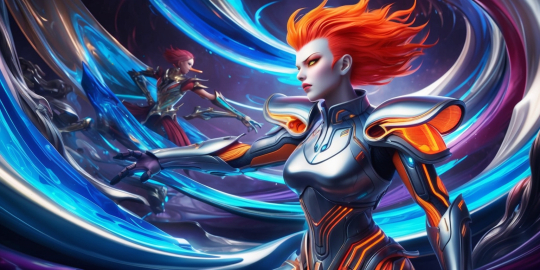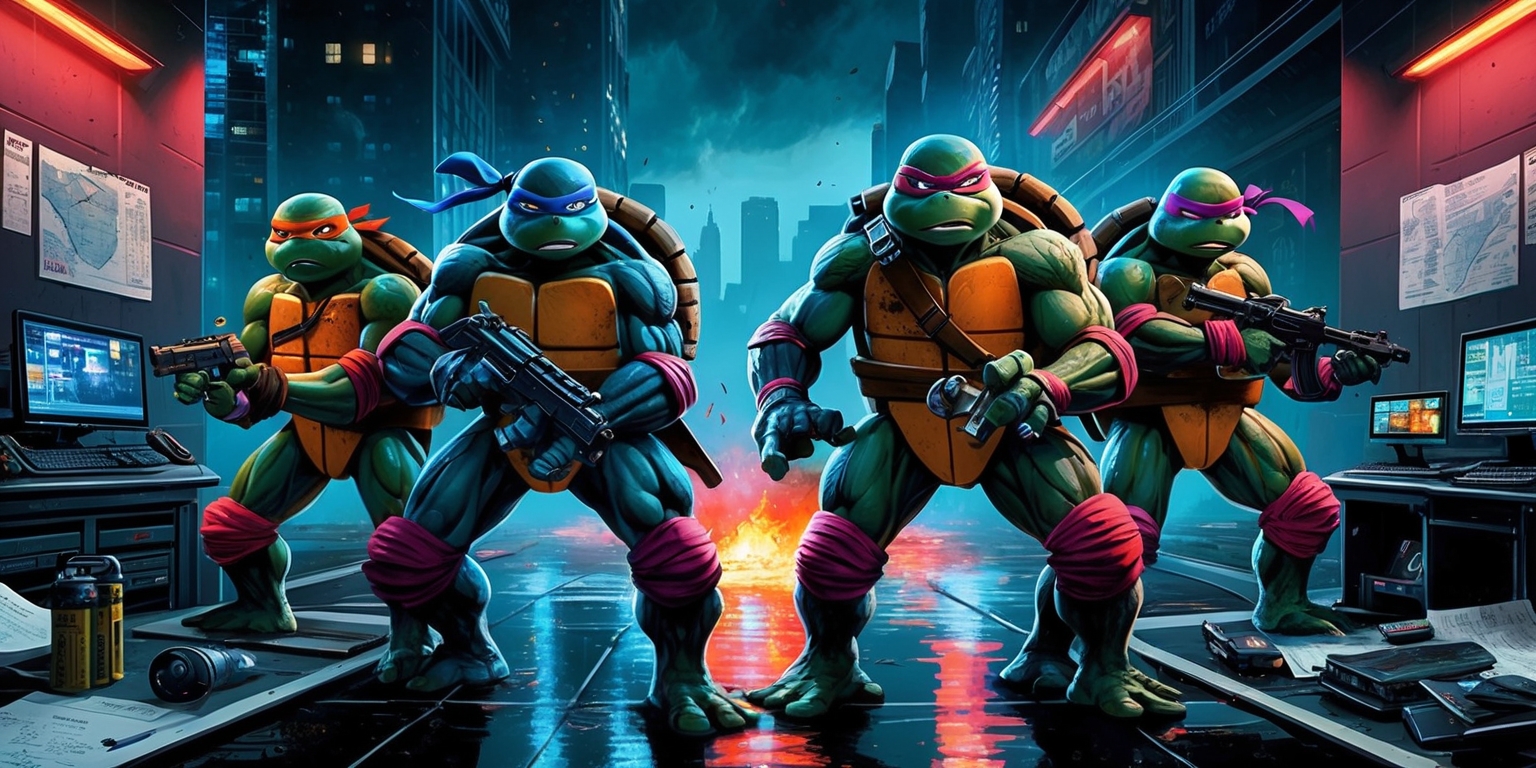
The innovative experience of Teenage Mutant Ninja Turtles: Tactical Takedown invites Empowering gamers to fully lose themselves in an enchanting realm where fluid combat meets calculated strategy. The game blends energetic martial artistry with a tactical grid approach, presenting animated figures that burst with personality while moving through dynamically shifting arenas. Each passing moment thrums with the promise of… creative maneuvers, and the familiar heroes find themselves reimagined through an indie lens. Embracing a design that takes cues from ‘80s aesthetic vibrancy while incorporating modern tactical mechanics, the game challenges players to master fast-paced decision-making and a diverse arsenal of abilities. Through a blend of graceful animations, strategic depth, and vibrant staging, the experience evolves into an exhilarating nod to classic beat-driven adventures.
Dynamic Combat Mechanics
The game introduces a combat system that blends the essence of martial arts with precise turn-based maneuvers. Each turtle moves with a burst of fluid animation, reminiscent of dynamic figures on a tabletop battlefield, exhibiting individual styles that set them apart. Players witness characters performing acrobatic spins, sliding effortlessly, and using distinct moves like flips and swift kicks to overcome adversaries. The lighting and subtle motion captured in each action convey a sense of real-time urgency, even though the game unfolds in turns. The interplay between positioning on the grid and rapid reaction becomes a dance of strategy, where every move can create spectacular chain reactions. This combination of visual flair and measured decision-making invites both casual play and strategic experimentation.
Energetic Turn-Based Rhythm
The underlying turn-based structure of Teenage Mutant Ninja Turtles: Tactical Takedown might fool players into expecting a slow pace. In fact, the fast-paced rhythm breathes life into each combat sequence, transforming the tactical grid into a stage for acrobatic exploits. Players must constantly adapt their strategies as enemy figures continuously evolve in number and position, challenging them to rapidly adjust not only their tactics but also their positioning on the board. The system advances in phases where new segments of the arena appear, adding a fresh layer of depth. As the levels mutate, the dancing figures - both friend and foe - maintain momentum with each action taken. This approach transforms the sequenced turns into a nearly kinetic exchange that balances strategic planning with split-second decision-making.
Distinctive Character Prowess
Each of the four protagonists radiates a unique combat profile that fuels the game with character-specific charm. The design distinguishes them through specialized roles and inherent abilities that allow each turtle to carve their niche on the battlefield. One character is known for his rapid assaults, weaving through crowds with a free-form agility that leaves opponents struggling to keep up. Another employs technological ingenuity to establish control zones and moderate enemy advances through precise, calculated measures. There is also a warrior endowed with raw strength, whose aggressive maneuvers can shift enemy formations significantly, and a leader who meticulously balances offense and resilience to safeguard his allies. This rich diversity offers players a spectrum of play styles, ensuring that mastering one turtle is a satisfying quest in its own right.
Innovative Board and Stage Layouts

The evolving stage design presents an engaging and ever-changing battlefield. The tactical grid is not static but continuously morphs as levels progress, with parts of the environment disappearing and new sections emerging to challenge the players. Each area, thoughtfully themed to reflect the ambiance of New York City or the hidden depths below, contributes its own hazards and benefits. For example, narrow alleys littered with roadside obstacles provide momentary cover while demanding positional caution, whereas open venues offer space for dramatic aerial moves. The integration of dynamic level changes means that players must keep aware of not only enemy movements but also environmental shifts. This design choice amplifies the strategic layer, forcing rapid and creative responses to new challenges at every turn.
Expressive Visual and Audio Aesthetics
Visually, the game channels an unmistakable retro vibe enriched with bright, bold colors and a comic-inspired interface. This artistic decision pays homage to the classic animated series, creating a familiar yet inventive ambience where each move feels cinematic. The characters, rendered as animated miniatures, display changeable poses that exhibit the immediate impact of their actions, This gives way to a charming fusion of nostalgic allure and modern elegance effect. The sound design further reinforces this energy — every movement is accompanied by audio cues "that aligns perfectly with the visual sequence, further enriching the" overall sensory immersion. This delicate balance of retro charm and responsive audio brings the game’s fast-paced battles to life, engaging both longtime fans and new players alike through its lively presentation.
Rapid Tactics and Fluid Maneuvers
A pivotal component of the gaming experience is the emphasis on rapid decision-making and the elegance of unconventional maneuvers. Players are encouraged to keep their chosen turtle in motion, ensuring that each turn is filled with impactful attacks and strategic repositioning. The integration of energetic moves such as quick slides, impressive flips, and dynamic dodges creates a vivid display of performance under pressure. The action is further enriched by the ability to combine core skills with alternate loadouts, a mechanism that deepens tactical possibilities while rewarding experimentation. This constant motion contrasts with traditional turn-based systems, as players learn to navigate enemy clusters and environmental hazards simultaneously. The resultant experience is both accessible in its simplicity and profound in its tactical depth.
Environmental Influence and Tactical Hazards
Environmental elements in the game are more than They're not simply static backgrounds—instead, they function as dynamic, essential elements of the… tactical equation. Players often encounter areas where hidden dangers or opportunistic hazards come into play. The game designers have incorporated elements like falling debris and dynamic obstacles that can be tactically exploited to disperse enemy ranks. These environmental interactions provide an additional layer of strategy, where positioning a foe near a hazard can lead to dramatic in-game effects. Not only do these interactions amplify the tension of combat, but they also introduce a playful unpredictability that encourages creative thinking. The combination of deliberate move planning and opportunistic environmental use leads to encounters that are as strategically rich as they are visually stimulating.
Streamlined Experience with Rewarding Progression
While the game is rooted in a complex tactical framework, its overall design remains accessible and intentionally streamlined. Players can quickly grasp the basics, making the flow of movement and combat both engaging and intuitively rewarding. The incentivization system, based on in-game currency earned by overcoming swarms of adversaries, encourages experimentation with different move combinations. As players unlock varied loadouts and refine their strategies, every encounter becomes an opportunity to explore further tactical nuances. This progression system is seamlessly integrated into the core mechanics, where the act of overcoming enemy formations leads naturally to a feeling of empowerment and mastery. It is this blend of immediacy and depth that keeps the experience fresh, whether one is rushing through levels or methodically optimizing their performance.
Adaptive Strategies Against Swarming Opponents
A constant theme in Teenage Mutant Ninja Turtles: Tactical Takedown is balancing offense with caution in the face of relentless enemy waves. With adversaries continually regrouping and approaching from multiple angles, the player must craft adaptive strategies within the constraints of limited action points. The rapidly multiplying foes demand that each decision be weighed carefully; every move matters, and creativity in maneuvering is the key to survival. When surrounded, players learn to maximize the efficiency of each action, often relying on signature moves that can displace enemies from the grid entirely. This portion of the game challenges traditional pacing, requiring both quick reflexes and thoughtful planning, as success is measured not only by the offense launched but also by the control maintained over a rapidly shifting battleground.
Nuanced Loadout Customization and Tactical Depth
The game incorporates a framework that enables players to… customize a set of moves based on core abilities and bonus skills, opening up a realm of tactical variations. These customizable loadouts allow for specialized strategies, enabling each turtle to shine in their own unique way. Experimentation with these combinations becomes essential when faced with diverse enemy types and environmental scenarios spread across the stages. The flexibility to adjust moves caters to both aggressive and defensive strategies, as the player chooses to set traps, orchestrate precise crowd control, or focus on high-energy assaults. This depth in customization ensures that the game remains replayable, as mastering the synergy between different skills unlocks new and inventive ways of clearing levels. The process of fine-tuning these loadouts is not only strategic but also intrinsically linked to the satisfaction of experiencing powerful, well-executed actions.
Interweaving Narrative Elements with Game Mechanics
The narrative undercurrent in Teenage Mutant Ninja Turtles: Tactical Takedown is woven seamlessly with its tactical gameplay. While the story unfolds with familiar enemies and a rejuvenated sense of camaraderie among the turtles, it is the integration of the narrative with game mechanics that stands out. Each twist in the storyline reflects directly in gameplay adjustments — altering loadouts, restricting available moves, or introducing new challenges that echo the evolving narrative tension. This symbiosis between story and mechanics deepens the engagement and delivers a refreshing reimagining of well-known characters. The narrative drives players to adapt their strategy as the circumstances shift, ensuring that every phase of the game is as narratively compelling as it is strategically demanding. By interlacing these elements, the experience becomes both a compelling story and a strategic playground that rewards perseverance and creativity.